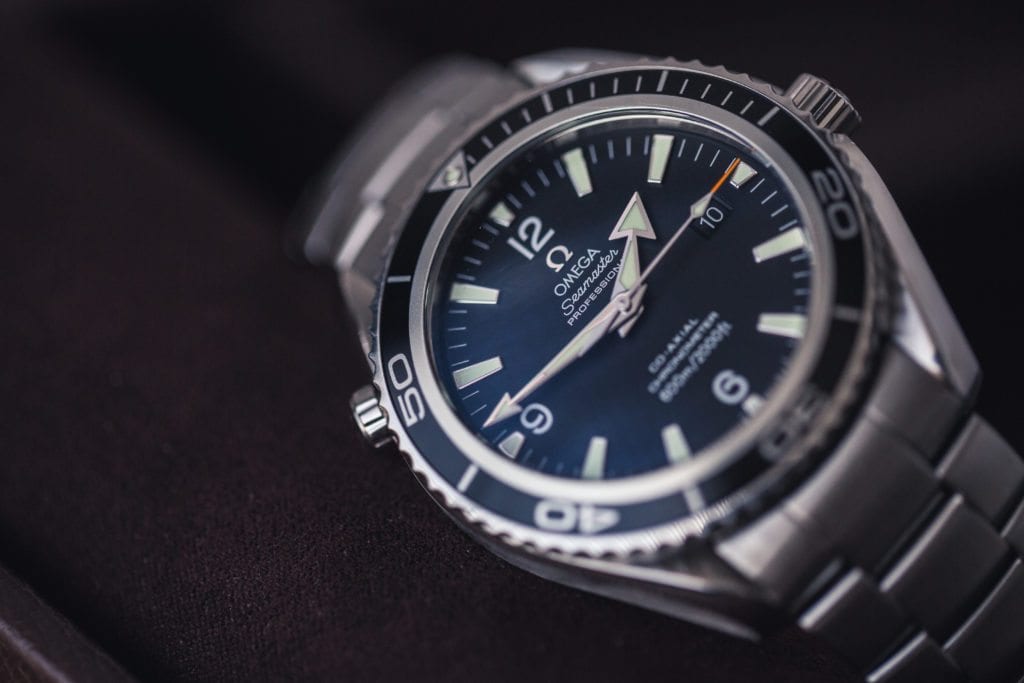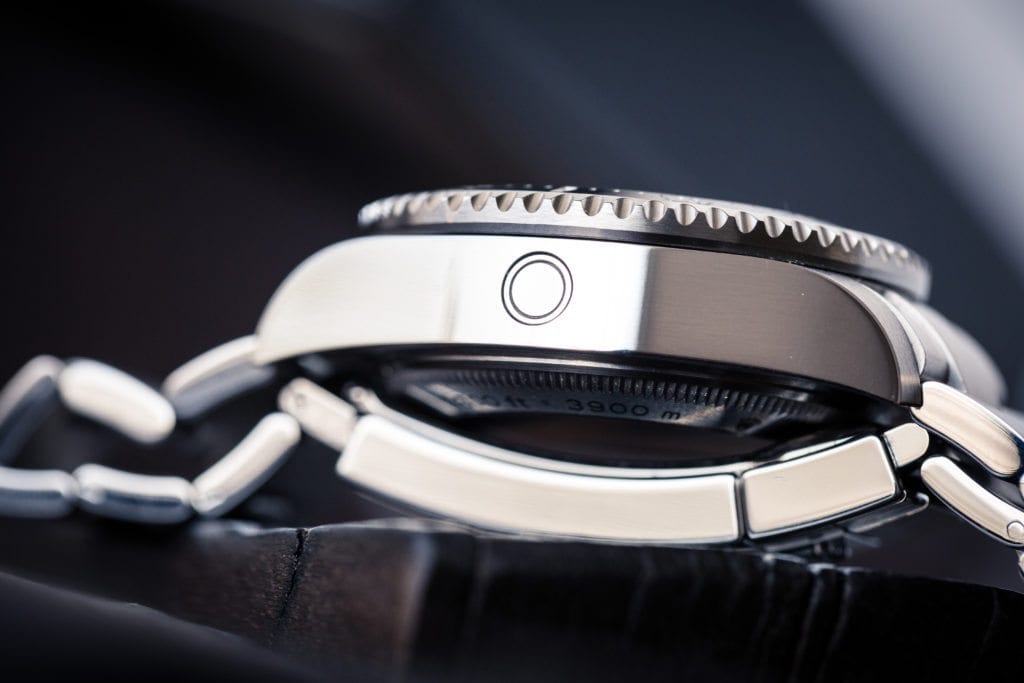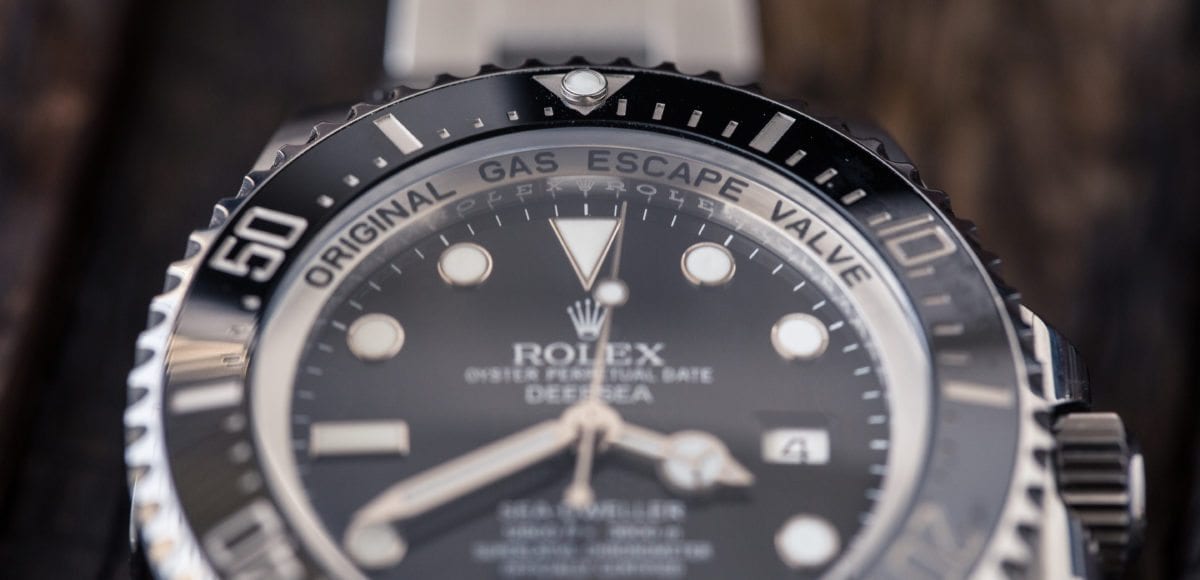Have you ever wondered: “What is a helium escape valve?” Although many think that the helium escape valve looks cool, it’s function is not well known.
While the helium escape valve is a common feature on professional dive watches, you might not know a lot about what it is and what it’s for. We explore the functions of the helium escape valve (which is as useful as it is cool-looking) and some of the watches that you’ll find with one.

OMEGA Seamaster Planet Ocean with a helium escape valve on the left-hand side of the case
In the 1960s, Rolex and Doxa S.A. co-created the helium escape valve and introduced it in the Rolex Submariner, the Rolex Sea-Dweller, and the Doxa Conquistador. Today, plenty of luxury watch brands will include a helium escape valve in their serious dive watches. For instance, the OMEGA Seamaster Planet Ocean and select TAG Heuer Aquaracer models feature a helium escape valve to bolster their credibility with professional divers.
So, what is the helium escape valve?
Unless you’re a professional diver, chances are you won’t ever have to use the helium escape valve. Mostly, the feature is there for professional divers diving to depths greater than 250 feet for extended periods of time.
At depths greater than 250 ft, the gasses in water become toxic. When divers go on expeditions at these depths, they have to travel down in a diving bell, which is highly saturated with helium and hydrogen to counteract the toxic air found at these depths.

OMEGA Seamaster Planet Ocean Helium Escape Valve
This is where the helium escape valve comes in handy. Because helium atoms are extremely small, they easily slip inside a watch case. This becomes a problem when the diving bell makes its ascent to the surface. As the bell depressurizes, so does the watch. The build-up of helium atoms inside of the watch case could damage the watch and the resulting pressure could pop the crystal off of the case. However, if a watch has a helium escape valve, it can be opened during decompression to expel helium safely out of the watch. Unless you are a professional diver, chances are that you won’t need the helium escape valve. When it’s not in use, it should be kept closed to prevent water and dirt from entering the watch case.
So unless you’re a professional diver, chances are you’ll never need the helium escape valve. And, when it’s not in use, it should be closed to prevent water and dirt from entering the watch case.
How does the helium escape valve work?
It’s simple really. There are both automatic and manual helium escape valves. For the manual operators, the watch will feature a separate screw-down crown that you open as you ascend to let gasses escape. When the pressure outside the watch reaches levels that are significantly different from levels inside of the watch, a one-way, spring-loaded valve is activated, releasing the trapped helium atoms and lowering the pressure inside of the watch.
There are both automatic and manual helium escape valves. For the manual operators, the watch will feature a separate screw-down crown that you open as you ascend to let gasses escape. When the pressure outside the watch reaches levels that are significantly different from levels inside of the watch, a one-way, spring-loaded valve is activated, releasing the trapped helium atoms and lowering the pressure inside of the watch.

Rolex Sea-Dweller Helium Escape Valve
If you’re more interested in an automatic option, it works like so: When the pressure outside the watch reaches a level significantly different from that inside of the watch, a one-way, spring-loaded valve is activated, releasing the trapped helium atoms and lowering the pressure inside of the watch.
Editor’s Note: This article was originally published on April 22, 2013. It has been updated for accuracy and clarity.
Get More Articles Like This in Your Inbox
We're constantly creating great content like this. So, why not get it delivered directly to your inbox? By subscribing you agree to our Privacy Policy but you can unsubscribe at any time.







Ken Mitchell Smith | July 2, 2013
|
There is no hydrogen involved in Tri-Mix or HeliOx, the bell chamber breathing gasses.
Ken Mitchell Smith | July 2, 2013
|
Extreme deep dives do use Hydrox! – Well shut me up!